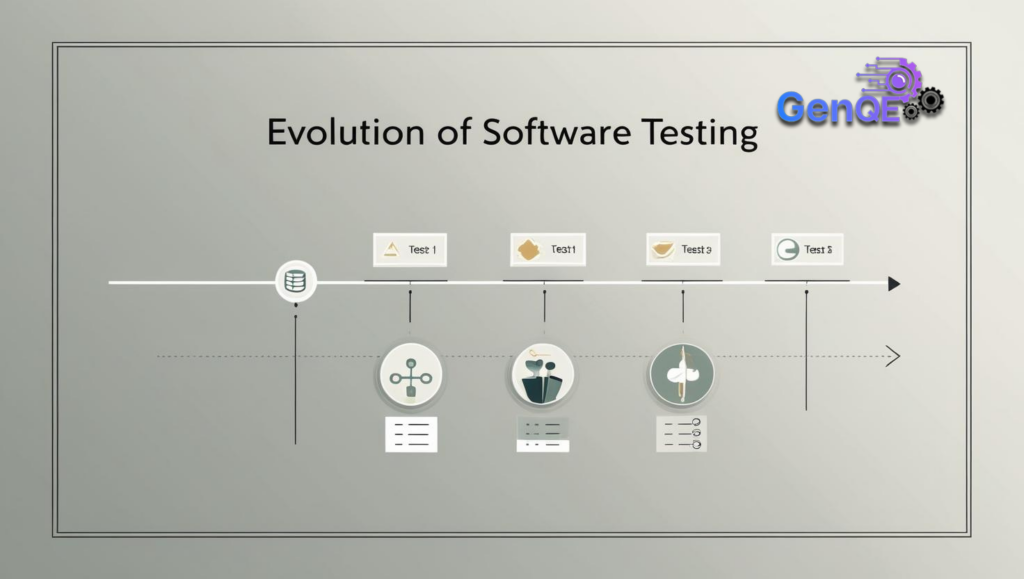
Introduction
Software testing has come a long way—from the early days of manual testing to today’s AI-driven automation. As applications become more complex, the demand for faster, more efficient testing solutions continues to grow.
With Agile, DevOps, and AI-powered tools reshaping the landscape, software testing is no longer just about finding bugs—it’s about ensuring quality, performance, and seamless user experiences.
In this article, we’ll explore:
✅ The evolution of software testing.
✅ Key challenges in modern testing.
✅ How AI and automation are transforming QA.
✅ What the future holds for testing in 2025 and beyond.
1️⃣ The Early Days: Manual Testing Dominance
In the early years of software development, testing was:
🔹 Manual and time-consuming – Testers executed test cases step by step.
🔹 Highly dependent on human intuition – No structured methodologies.
🔹 Reactive rather than proactive – Bugs were often found after deployment.
Common manual testing approaches included:
✅ Exploratory Testing – Testers relied on intuition to find defects.
✅ Test Case Execution – Following predefined scripts manually.
✅ Regression Testing – Repeating tests after changes were made.
While effective in small projects, manual testing struggled with scalability and speed as software complexity increased.
2️⃣ The Shift to Automation Testing
As software development accelerated, test automation emerged to address:
🚀 Repetitive testing tasks – Reducing manual effort.
🚀 Regression testing challenges – Automating frequently run test cases.
🚀 Time-to-market pressures – Delivering software faster.
Selenium, JUnit, TestNG, and Appium became widely used for:
✅ Automated Functional Testing – Checking if features work as expected.
✅ Performance Testing – Measuring speed and reliability under load.
✅ Continuous Testing in DevOps – Integrating tests into CI/CD pipelines.
However, traditional automation required:
⚠ Significant scripting effort – Writing and maintaining test scripts.
⚠ High maintenance costs – Tests often broke with UI changes.
⚠ Limited adaptability – Could not handle unexpected software changes.
3️⃣ The Rise of AI-Driven Testing
Artificial Intelligence (AI) and Machine Learning (ML) have transformed testing by making it:
🤖 Autonomous – Self-healing scripts, intelligent test generation.
⚡ Faster – AI analyzes code changes and runs relevant tests automatically.
🔍 Smarter – Predicts defects before they impact users.
Key Advancements in AI Testing
✅ Self-Healing Automation – AI updates test scripts when UI changes occur.
✅ Predictive Defect Detection – AI identifies high-risk areas in the code.
✅ Intelligent Test Case Generation – AI generates tests based on real-world usage.
✅ Natural Language Processing (NLP) in Testing – AI understands and converts manual test cases into automated scripts.
Tools like GenQE, Testim, Applitools, and Mabl are leading this AI revolution.
4️⃣ Challenges & Future Trends in AI-Driven Testing
Despite its potential, AI-driven testing faces challenges:
⚠ Explainability – AI decision-making needs transparency.
⚠ Initial Implementation Costs – AI tools can be expensive.
⚠ Data Dependency – AI models require high-quality data for accuracy.
Future Trends in Software Testing
🔮 AI-Powered Autonomous Testing – AI will conduct end-to-end testing with minimal human intervention.
📡 Hyperautomation – Integrating AI, RPA, and ML to achieve fully automated testing cycles.
🌍 Testing in the Metaverse & Web 3.0 – New challenges for immersive and blockchain-based applications.
🧪 Shift-Left & Shift-Right Testing – AI will enhance testing in both development (left) and production (right) phases.
Conclusion
From manual testing to AI-driven automation, software testing has evolved significantly. The future lies in intelligent, self-adapting, and predictive testing methodologies that ensure higher software quality with minimal effort.
💡 Do you think AI will completely replace manual testers, or will human intuition always play a role? Let’s discuss in the comments! 🚀